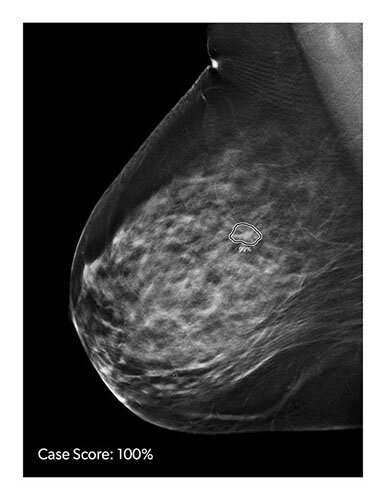Tau PET Scans Superior at Predicting Cognitive Decline in Patients than Commonly Used Imaging Techniques
|
By MedImaging International staff writers Posted on 10 Aug 2023 |

Alzheimer's disease, a common neurodegenerative disorder, results in a gradual deterioration of memory and autonomy. This condition is characterized by the buildup of neurotoxic proteins, specifically amyloid plaques and tau tangles, within the brain. Given the silent progression of these pathological changes over decades, early diagnosis is vital to initiate interventions as soon as feasible in the disease's course. Now, researchers have demonstrated that tau PET, an innovative imaging method for visualizing the tau protein, can predict cognitive decline in patients with superior accuracy compared to conventional imaging techniques. These findings support the rapid integration of tau PET into clinical practice for providing early and individualized interventions for patients.
Positron emission tomography (PET), a key diagnostic tool for Alzheimer's disease, employs injected tracers to visualize specific brain pathologies. While amyloid plaques may not invariably correlate with cognitive or memory impairment, the presence of tau aligns closely with clinical symptoms and significantly influences whether a patient remains stable or deteriorates rapidly. Visualizing tau using imaging techniques has posed challenges due to its intricate structure and lower concentration. Flortaucipir, a radiotracer approved by the U.S. Food and Drug Administration (FDA) in 2020, binds with the tau protein. This tracer facilitates the detection of tau accumulation and its spatial distribution in the brain, enabling precise evaluation of its role in the clinical manifestation of the disease.
Scientists from the University of Geneva (UNIGE, Geneva, Switzerland) and the Geneva University Hospitals (HUG, Geneva, Switzerland) embarked on a study to determine which imaging technique—amyloid PET, glucose metabolism PET, or tau PET—best predicted future cognitive decline in Alzheimer's disease. The study enrolled around 90 participants from the HUG Memory Centre. The study revealed that while all PET measures correlated with the presence of cognitive symptoms, validating their role as strong indicators of Alzheimer's disease, tau PET exhibited the greatest predictive capacity for cognitive decline rates, even in individuals with minimal symptoms. These findings support incorporating tau PET into routine clinical assessments to assess individual prognosis and select the most appropriate therapeutic plan for each patient.
“This breakthrough is crucial for better management of Alzheimer’s disease. Recently, drugs targeting amyloid have shown positive results. New drugs targeting the tau protein also look promising,” said Associate Professor Valentina Garibotto who directed the research. “By detecting the pathology as early as possible, before the brain is further damaged, and thanks to new treatments, we hope to be able to make a greater impact on patients’ future and quality of life. Similarly, we are beginning to map the distribution of tau in order to understand how its location in the different regions of the brain influences symptoms.”
Latest General/Advanced Imaging News
- New AI Method Captures Uncertainty in Medical Images
- CT Coronary Angiography Reduces Need for Invasive Tests to Diagnose Coronary Artery Disease
- Novel Blood Test Could Reduce Need for PET Imaging of Patients with Alzheimer’s
- CT-Based Deep Learning Algorithm Accurately Differentiates Benign From Malignant Vertebral Fractures
- Minimally Invasive Procedure Could Help Patients Avoid Thyroid Surgery
- Self-Driving Mobile C-Arm Reduces Imaging Time during Surgery
- AR Application Turns Medical Scans Into Holograms for Assistance in Surgical Planning
- Imaging Technology Provides Ground-Breaking New Approach for Diagnosing and Treating Bowel Cancer
- CT Coronary Calcium Scoring Predicts Heart Attacks and Strokes
- AI Model Detects 90% of Lymphatic Cancer Cases from PET and CT Images
- Breakthrough Technology Revolutionizes Breast Imaging
- State-Of-The-Art System Enhances Accuracy of Image-Guided Diagnostic and Interventional Procedures
- Catheter-Based Device with New Cardiovascular Imaging Approach Offers Unprecedented View of Dangerous Plaques
- AI Model Draws Maps to Accurately Identify Tumors and Diseases in Medical Images
- AI-Enabled CT System Provides More Accurate and Reliable Imaging Results
- Routine Chest CT Exams Can Identify Patients at Risk for Cardiovascular Disease
Channels
Radiography
view channel
Novel Breast Imaging System Proves As Effective As Mammography
Breast cancer remains the most frequently diagnosed cancer among women. It is projected that one in eight women will be diagnosed with breast cancer during her lifetime, and one in 42 women who turn 50... Read more
AI Assistance Improves Breast-Cancer Screening by Reducing False Positives
Radiologists typically detect one case of cancer for every 200 mammograms reviewed. However, these evaluations often result in false positives, leading to unnecessary patient recalls for additional testing,... Read moreMRI
view channel
PET/MRI Improves Diagnostic Accuracy for Prostate Cancer Patients
The Prostate Imaging Reporting and Data System (PI-RADS) is a five-point scale to assess potential prostate cancer in MR images. PI-RADS category 3 which offers an unclear suggestion of clinically significant... Read more
Next Generation MR-Guided Focused Ultrasound Ushers In Future of Incisionless Neurosurgery
Essential tremor, often called familial, idiopathic, or benign tremor, leads to uncontrollable shaking that significantly affects a person’s life. When traditional medications do not alleviate symptoms,... Read more
Two-Part MRI Scan Detects Prostate Cancer More Quickly without Compromising Diagnostic Quality
Prostate cancer ranks as the most prevalent cancer among men. Over the last decade, the introduction of MRI scans has significantly transformed the diagnosis process, marking the most substantial advancement... Read moreUltrasound
view channel
Deep Learning Advances Super-Resolution Ultrasound Imaging
Ultrasound localization microscopy (ULM) is an advanced imaging technique that offers high-resolution visualization of microvascular structures. It employs microbubbles, FDA-approved contrast agents, injected... Read more
Novel Ultrasound-Launched Targeted Nanoparticle Eliminates Biofilm and Bacterial Infection
Biofilms, formed by bacteria aggregating into dense communities for protection against harsh environmental conditions, are a significant contributor to various infectious diseases. Biofilms frequently... Read moreNuclear Medicine
view channel
New SPECT/CT Technique Could Change Imaging Practices and Increase Patient Access
The development of lead-212 (212Pb)-PSMA–based targeted alpha therapy (TAT) is garnering significant interest in treating patients with metastatic castration-resistant prostate cancer. The imaging of 212Pb,... Read moreNew Radiotheranostic System Detects and Treats Ovarian Cancer Noninvasively
Ovarian cancer is the most lethal gynecological cancer, with less than a 30% five-year survival rate for those diagnosed in late stages. Despite surgery and platinum-based chemotherapy being the standard... Read more
AI System Automatically and Reliably Detects Cardiac Amyloidosis Using Scintigraphy Imaging
Cardiac amyloidosis, a condition characterized by the buildup of abnormal protein deposits (amyloids) in the heart muscle, severely affects heart function and can lead to heart failure or death without... Read moreImaging IT
view channel
New Google Cloud Medical Imaging Suite Makes Imaging Healthcare Data More Accessible
Medical imaging is a critical tool used to diagnose patients, and there are billions of medical images scanned globally each year. Imaging data accounts for about 90% of all healthcare data1 and, until... Read more
Global AI in Medical Diagnostics Market to Be Driven by Demand for Image Recognition in Radiology
The global artificial intelligence (AI) in medical diagnostics market is expanding with early disease detection being one of its key applications and image recognition becoming a compelling consumer proposition... Read moreIndustry News
view channel
Bayer and Google Partner on New AI Product for Radiologists
Medical imaging data comprises around 90% of all healthcare data, and it is a highly complex and rich clinical data modality and serves as a vital tool for diagnosing patients. Each year, billions of medical... Read more





















